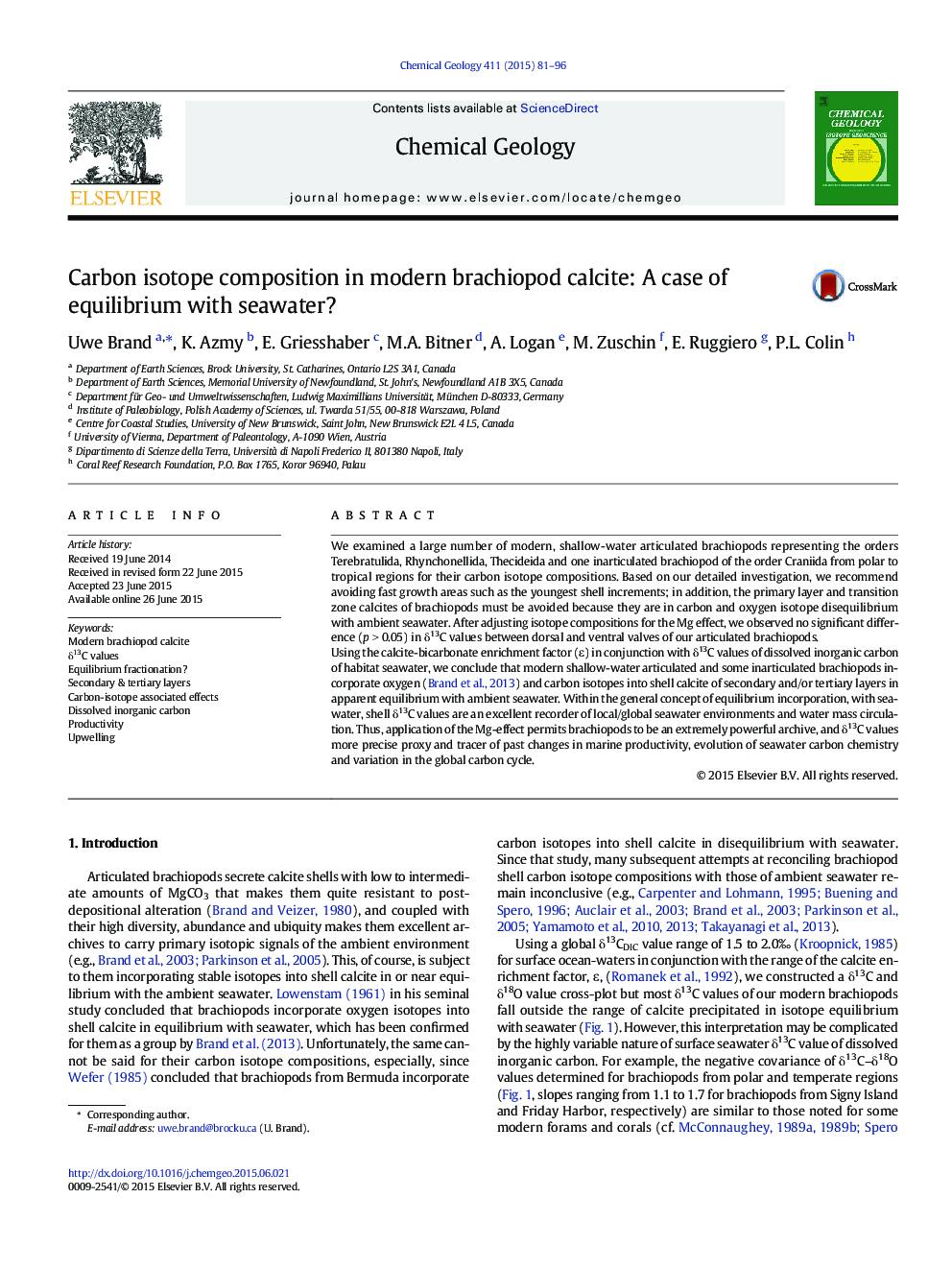| Article ID | Journal | Published Year | Pages | File Type |
|---|---|---|---|---|
| 6436318 | Chemical Geology | 2015 | 16 Pages |
â¢Articulated modern brachiopods are in carbon and oxygen isotope equilibrium with seawater.â¢Equilibrium applies to the secondary and tertiary layers of the dorsal and ventral valves.â¢Isotope equilibrium may apply to other marine invertebrates provided the Mg-effect is applied.â¢Primary layer and transition zone of articulated brachiopods are in isotope disequilibrium with seawater.
We examined a large number of modern, shallow-water articulated brachiopods representing the orders Terebratulida, Rhynchonellida, Thecideida and one inarticulated brachiopod of the order Craniida from polar to tropical regions for their carbon isotope compositions. Based on our detailed investigation, we recommend avoiding fast growth areas such as the youngest shell increments; in addition, the primary layer and transition zone calcites of brachiopods must be avoided because they are in carbon and oxygen isotope disequilibrium with ambient seawater. After adjusting isotope compositions for the Mg effect, we observed no significant difference (p > 0.05) in δ13C values between dorsal and ventral valves of our articulated brachiopods.Using the calcite-bicarbonate enrichment factor (ε) in conjunction with δ13C values of dissolved inorganic carbon of habitat seawater, we conclude that modern shallow-water articulated and some inarticulated brachiopods incorporate oxygen (Brand et al., 2013) and carbon isotopes into shell calcite of secondary and/or tertiary layers in apparent equilibrium with ambient seawater. Within the general concept of equilibrium incorporation, with seawater, shell δ13C values are an excellent recorder of local/global seawater environments and water mass circulation. Thus, application of the Mg-effect permits brachiopods to be an extremely powerful archive, and δ13C values more precise proxy and tracer of past changes in marine productivity, evolution of seawater carbon chemistry and variation in the global carbon cycle.
